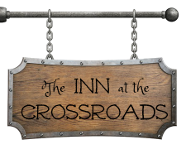
Homebrewed Ginger Beer
To make your own ginger beer couldn’t be much easier. This recipe is based on the method detailed in the wonderful book, The Art of Fermentation, by Sandor Katz. It uses natural yeasts from the ginger (that’s why organic ginger is important), and produces a fizzy, effervescent beverage that is delicious.
AND THEN!
You can submit your own varietal to enter the giveaway for a signed copy of the cookbook here! Deadline is November 1st!
Ginger Beer Recipe
You’ll Need:
- Ginger Bug (see below)
- organic ginger, about 4″
- 2 cups sugar
- 1 gallon glass jug
- an airlock (useful), or scrap of fabric and rubber band
- 2″ organic ginger
- 2 Tbs. sugar
- water
Start by making up a “ginger bug”. It won’t matter how much, but I usually start with about a tablespoon of grated ginger (skin and all!). Put your grated ginger into a small jar with sugar and water (about 1 tsp and 1 Tbs, respectively). Cover with some fine cheesecloth to keep out real bugs. Continue to add a bit more grated ginger and sugar each day, until the mixture has become bubbly; it should take no more than a few days. Set aside.

For the next step, you’ll make the base for the ginger beer. Put 4 cups of water in a pot over medium high heat, and add about 4″ of thinly sliced ginger. Bring to a boil, then turn down the heat and simmer for around 15 minutes. Carefully strain and pour this hot mixture into a glass gallon jug. *Be careful to increase the temperature of the jug gradually, as intense temp changes can shatter glass.*
Pour in two cups of sugar, and stir until the sugar is dissolved. Add enough additional water to bring the level up near the top of the jug. When the liquid is no longer hot, add about a Tablespoon of the ginger bug to the jug.
Stir periodically, until there are tiny bubbles visible in the liquid. Once this happens, you can prepare to bottle it. If you like a tamer ginger beer, bottle quickly, but if you prefer a slightly more alcoholic version, let the mixture ferment for a few days.
As with all carbonated home brews, take care when bottling. Place your filled bottles in the fridge to slow down the fermentation. The ginger beer is best enjoyed within a couple of weeks, but it’s so easy, you can keep making more in next to no time at all, provided you keep feeding your ginger bug!







 Roman Mustard
Roman Mustard

 Elizabethan Honeycakes
Elizabethan Honeycakes